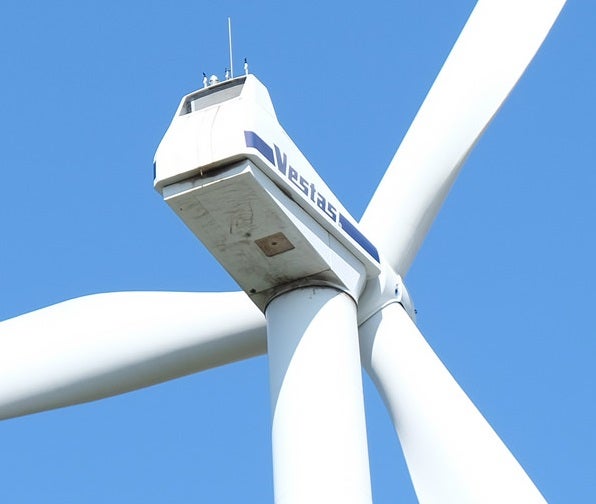
Danish company Vestas has introduced the EnVentus wind turbine platform, which will available in two variants, the V162-5.6 MW and V150-5.6MW.
The V162 and V150 will be available globally and will be added to Vestas’ current 2 and 4MW platform turbines. Both turbines can cover low, medium and high wind conditions and feature a full-scale converter which will allow them to meet different grid requirements around the world.
The V162-5.6MW will have a swept area of 20,000m2 and produce 26% higher annual production than Vestas’ current V150-4.2MW model.
The V150-5.6MW will use Vestas’ current 150m rotor blades and apply them to higher wind speeds, increasing annual energy production potential by 30% compared with its predecessor the V136-4.2MW.
The V150 will be available first, installed in the second half of 2019 with production scheduled for mid-2020. Vestas expects the V162 to be installed in mid-2020, with production scheduled for the end of that year.
Vestas president and CEO Anders Runevad said: “EnVentus is a great achievement by everyone at Vestas that allows us to meet customers’ increasing needs for customisation and continuous reduction of the cost of energy. Our relentless focus on delivering industry-leading revenue and profitability the past years has given us the resources to develop a new platform built on our world-class R&D. Following our 2018 order record and 100 GW milestone, EnVentus is another important step in Vestas’ journey to become the global leader in sustainable energy solutions.”

US Tariffs are shifting - will you react or anticipate?
Don’t let policy changes catch you off guard. Stay proactive with real-time data and expert analysis.
By GlobalDataVestas chief technology officer Anders Vedel added: “Vestas has pioneered wind energy since 1979 and by introducing EnVentus and its first two variants, we connect heritage with innovation to underline our technology leadership. With the introduction of a platform built on advanced modularity, we increase our ability to provide customised solutions while ensuring value chain optimisation […].”



